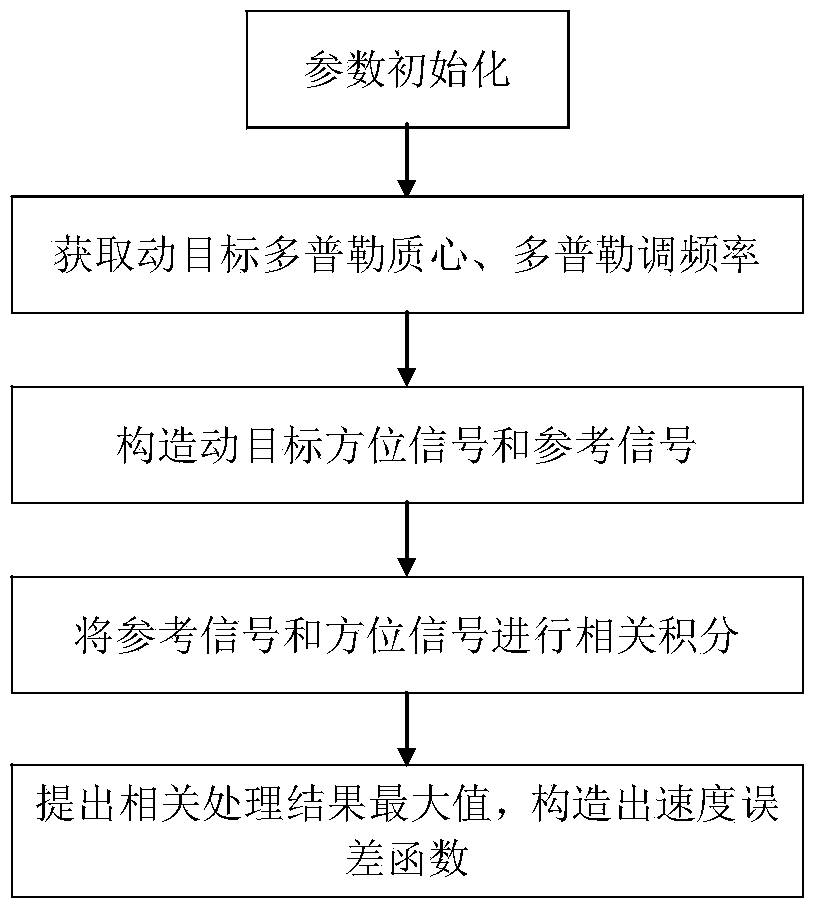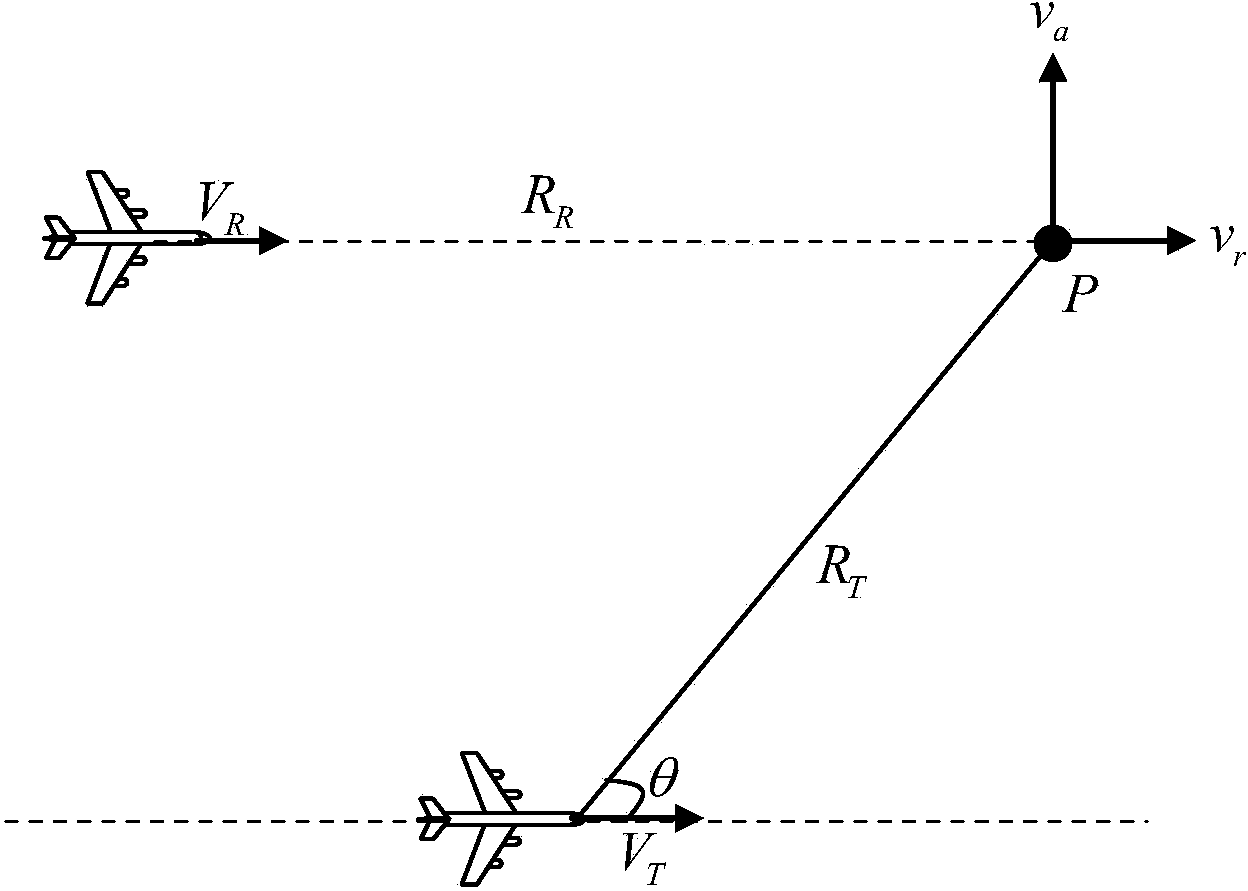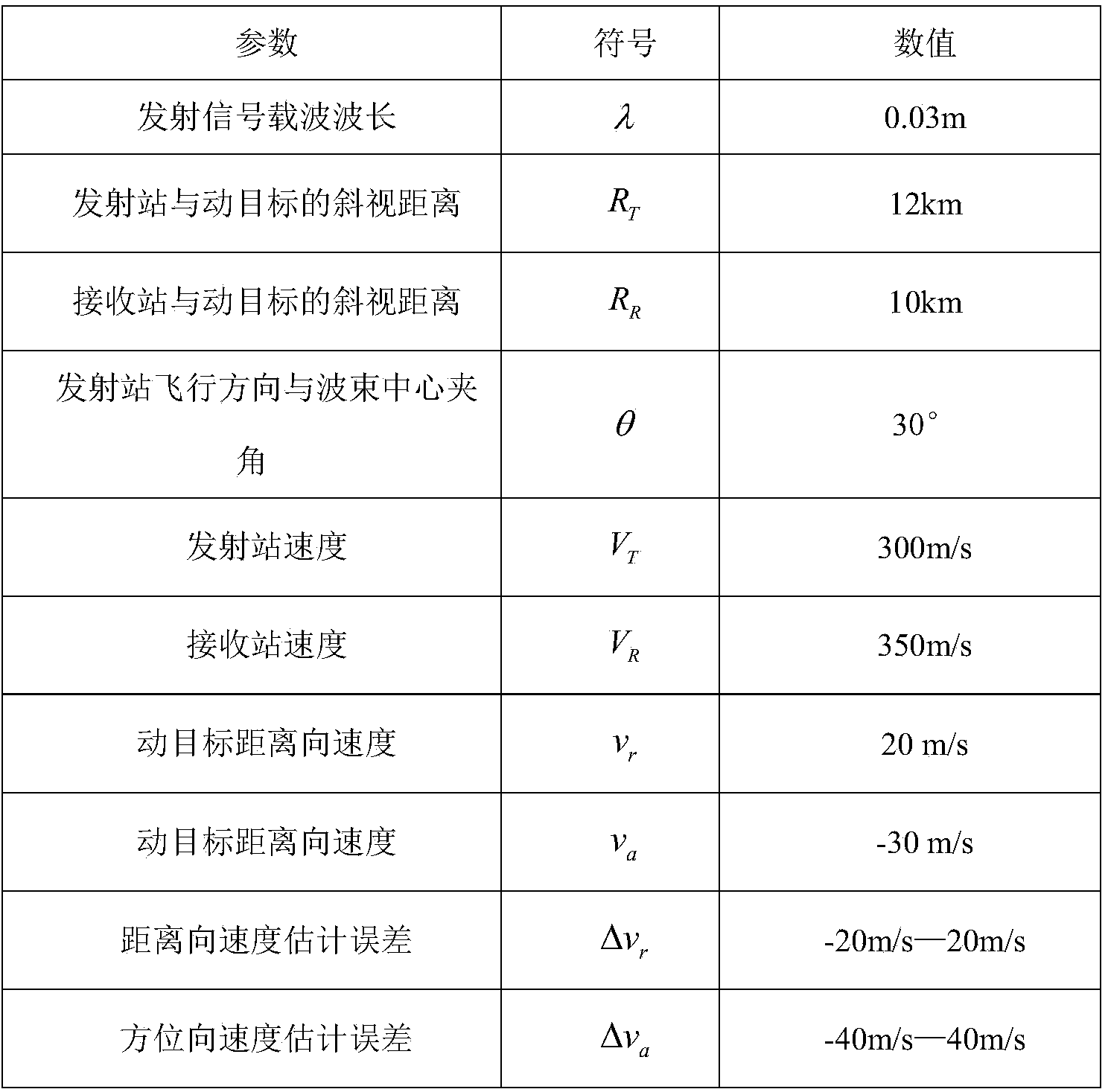Double-base foresight synthetic aperture radar moving-target speed error function construction method
A construction method, a technique of velocity error, applied in the field of radar
- Summary
- Abstract
- Description
- Claims
- Application Information
AI Technical Summary
Problems solved by technology
Method used
Image
Examples
Embodiment Construction
[0053] The present invention mainly adopts the method of simulation experiment to verify, and all steps and conclusions are verified correctly on Matlab2012. The present invention will be further described in detail below in conjunction with the accompanying drawings and specific embodiments. The schematic diagram of the process is as follows figure 1 As shown, the specific process is as follows:
[0054] Step 1: System parameter initialization
[0055] The geometric structure diagram of the bibase forward-looking SAR adopted in the specific embodiment of the present invention is as follows figure 2 As shown, the system parameter table adopted is as follows image 3 As shown, among them, the moving target P distance to the moving speed v r is 20m / s, the azimuth movement speed v a is -30m / s, the squint distance R between the transmitting station and the moving target P T is 12km, the speed of the launching station is V T is 300m / s, the angle θ between the flight directi...
PUM
 Login to View More
Login to View More Abstract
Description
Claims
Application Information
 Login to View More
Login to View More - R&D
- Intellectual Property
- Life Sciences
- Materials
- Tech Scout
- Unparalleled Data Quality
- Higher Quality Content
- 60% Fewer Hallucinations
Browse by: Latest US Patents, China's latest patents, Technical Efficacy Thesaurus, Application Domain, Technology Topic, Popular Technical Reports.
© 2025 PatSnap. All rights reserved.Legal|Privacy policy|Modern Slavery Act Transparency Statement|Sitemap|About US| Contact US: help@patsnap.com



